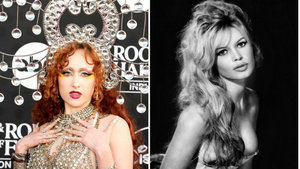Despite assertions of immutability and consistency, The Church of Jesus Christ of Latter-day Saints’s positions on sexuality and gender have proven fragile and changeable across time. Throughout much of the 19th century, for example, plural marriage between a man and multiple women was taught as an “everlasting covenant” that would never be abolished. Under intense scrutiny and pressure from the US government, the Church officially abandoned the practice in 1890 and currently teaches that only marriage between one man and one woman is ordained of God.
Another fundamental shift in LDS teachings is its discourse around homosexuality. Since the 1950s, LDS elites consistently framed homosexuality as an evil and viral contagion that would destroy individual, familial, and societal well-being, implementing policies that promoted conversion therapy and made identifying as homosexual, gay, or lesbian an excommunicable offense. Today, the Church allows people to identify as gay or lesbian and engages in far more accepting and inclusive rhetoric.
Teachings around oral sex, birth control, and interracial marriage have also undergone massive changes, even complete reversals, within the past half-century. Doctrines and policies around sexuality and gender are moving targets that have been clumsily and contradictorily managed throughout its two-hundred-year history.
As a result, the modern Church anxiously finds itself at a crossroads concerning its LGBTQ+ stances. They simultaneously cling to anachronistic theology that asserts the sinfulness of same-sex relationships and gender transitions while striving to stay culturally relevant in an increasingly social justice-oriented world.
LDS leaders have propagated mixed and contradictory messages in navigating this untenable position. On the one hand, church President Russell Nelson and his first counselor, Dallin Oaks, have continued to hammer anti-LGBT teachings, declaring that marriage between a man and woman is “irrevocable doctrine.” On the other hand, the Church has made a series of moves that show greater acceptance of LGBTQ+ individuals and allies than ever before.
The recent hiring of church spokesperson Aaron Sherinian is a powerful example of this tension. His social media accounts are saturated with bold LGBTQ+ activism, including his personal use and support of pronouns, unequivocal affirmations of trans individuals, and celebration of the country’s legalization of same-sex marriage. In June 2015, he tweeted: “Way to go #SCOTUS. Gay marriage now legal across all 50 states! #LoveisLove #MarriageEquality.” He also fearlessly promotes pride events, symbols, and slogans, which directly contradict the directives of church leaders.
In a remarkably controversial address delivered at BYU-Provo in 2021, LDS Apostle Jeffrey R. Holland called for “musket fire” directed at those who oppose the faith’s teachings on marriage and sexuality, spoke derisively of “flag-waving and parade-holding,” and warned “that love and empathy [should] not get interpreted as condoning and advocacy.” If its leaders continue to denounce same-sex marriage and LGBTQ+ activism, why then would the Church hire such an outspoken advocate as its head spokesperson?
First, it is likely that top leaders do not act as a monolith and have significant disagreements about LGBTQ+ teachings and policies. While several high-profile leaders refuse to abandon their antiquated worldview, others have far more nuanced and compassionate perspectives. Local leaders also demonstrate this ideological diversity and treat LGBTQ+ members with tremendous variability.
Second, this mixed messaging represents a gradual yet successful struggle toward equality within the Church, a decades-long battle that courageous LGBTQ+ individuals and activists have been fighting and even dying for. There are numerous recent examples of same-sex couples receiving callings and taking the sacrament in their congregations, privileges that gay and lesbian members would have only dreamt of in previous years. Furthermore, transgender individuals were permitted baptisms in recent years with their preferred names and pronouns acknowledged on the rolls of the Church.
Dr. Martin Luther King Jr. taught that “the arc of the moral universe is long, but it bends toward justice.” While it is not inevitable that the LDS Church will fully embrace LGBTQ+ relationships and identities, mounting sociocultural and political advocates are at least causing the Church to see the damage caused by clinging to its anti-LGBTQ+ teachings. I sincerely hope that their mixed messaging represents a gradual decay of homophobic and transphobic teachings in favor of steady evolution toward full acceptance of LGBTQ+ Latter-day Saints.
Keith Burns is a Sarah Lawrence College graduate, specializing in Mormonism and sexuality.
Want to share an opinion on an issue? Have an inspiring personal story to tell? Learn more by visiting advocate.com/submit.
Views expressed in The Advocate’s opinion articles are those of the writers and do not necessarily represent the views of The Advocate or our parent company, equalpride.




































































Charlie Kirk DID say stoning gay people was the 'perfect law' — and these other heinous quotes